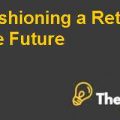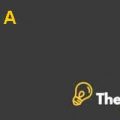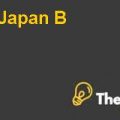
1. What is a brand? Why does Unilever to want fewer of them?
A brand is a very unique name or identity under which a manufacturer market and sell a set of their unique products and the process through which brand and brand identities are created which is known as branding (Landa, 2006). Brands helps a manufacturer to distinguish its products from its competitors as well as from its other product lines. For example, Dove is a brand of Unilever that distinguish it from Lux (another soap brand from Unilever) as well as from its competitors such as Procter and Gamble’s Ivory. For developing and marketing a brand, a manufacturer needs to design a unique logo, color, packaging, shapes, size and a number of intangible and tangible things to differentiate it from the rest of the market in order to generate great value. Unilever wanted to have fewer brands in order to easily and effectively control them to develop a unified global image. The company once had 1,600 brands, but it lacked a unified global identity, as a result, many of its customers were purchasing its products with a perception that these products belonged to some other brands/companies rather than Unilever. For example, Unilever was the world’s largest ice cream manufacturer with so many brands in different regions such as Walls (UK and most parts of Asia), Ola (Netherlands), Langnese (Germany), Algida (Italy), Kibon (Brazil), and Ben & Jerry’s and Breyers (United States) instead of developing and marketing a single ice cream brand across the globe. The presence of too many brands made it difficult for the company to effectively manage their brands in a centralized way using a single corporate strategy. Unilever’s brands were managed by local managers, which had greatly affected the direction and performance of these brands. In order to avoid potential threats and risks in the future, Unilever planned to narrow down their brands from 1,600 to only 400 by selecting small numbers to push as their “Masterbrand”. For the management of each Masterbrand there would be a global brand unit with a responsibility to focus on each brand across the world.
- 2. What was Dove’s market positioning in the 1950s? What is its positioning in 2007?
In 1957, Unilever had launched the Dove in the segment of soap on the basis of the functional qualities of their product. At that time, though, Dove was a soap which was differentiated with a claim that it would not dry out your skin just the way other soaps does, because its formula was technically different from an ordinary soap and contain high levels of natural skin moisturizers. At that time, such sort of advertising campaigns were designed for Dove, which had focused to portray this product as an alternative to soap due to its moisturizing skin cleansing qualities. In its advertisements it was shown that the cream being poured into a tablet. The overall idea and concept remained same for about half a century, however, the term ‘cleanser cream’ was replaced with ‘moisturizing cream’. The product was recommended by women and dermatologists as a curing agent for the treatment of dry skin. For about half a century, Dove continued its success with its well-known and highly effective strategy based on its functional attributes. In 2000, when Unilever decided to narrow down its brands under some “Masterbrand”, Dove also became a “Masterbrand” which covered a number of other products under a single brand, including cleansing bars, body washes, face care, hand washes, hair care, anti-prespirants, deodorants, and body lotions. This Masterbrand strategy had compelled the Unilever to extend the positioning platform for Dove as an entire product line rather than a beauty bar. An intensive research was conducted to change the face of this brand for which a new marketing campaign was launched called “The Campaign for Real Beauty”. A range of messages was designed to communicate with women on the basis of the research conducted to understand the perception and psyche of women about beauty and beauty brands. In their current positioning for Dove, they used a very different type of approach in which they build an emotional connection with women by motivating them to develop self-esteem. In 2007, Dove positioned itself as a brand that could define real and true beauty with the help of ordinary women. Instead of defining functional attributes of their products, they had focused on the superior and diverse attributes of their products to target a broader market to define true beauty....................
This is just a sample partial case solution. Please place the order on the website to order your own originally done case solution.













